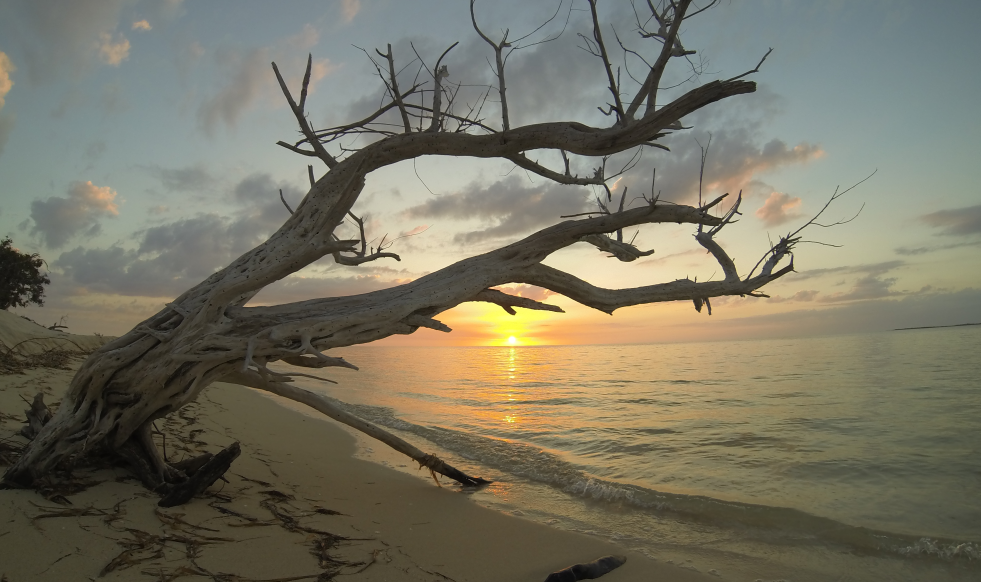Facing a future with increasingly powerful hurricanes and rising seas, Cuba is addressing its vulnerability to climate change head-on.
The country recently approved a new constitution that highlights the importance of addressing climate change, and its National Plan to Confront Climate Change, known as Tarea Vida (“Project Life”), provides a template to coordinate the resilience efforts of multiple sectors across the island.
A recent seminar in Havana on climate finance and sustainable development highlighted a three-pronged strategy for effectively building resilience: the protection and rehabilitation of ecosystems to reduce climate impacts, robust data collection, and community involvement every step of the way. These best practices translate to the U.S. as well.
1. Natural ecosystems provide cost-effective protection for Cuba’s coast
Cuba takes a holistic approach to coastal adaptation. Tarea Vida calls for the use of natural infrastructure and ecosystem-based solutions to increase resilience to the growing challenges of floods, erosion, and saline intrusion into aquifers and soils. As noted by one seminar presenter, the ecosystem-based approach addresses these problems “all the way from community to reef.”

Investing in nature not only makes fiscal sense, but it also allows coastal communities to preserve their natural beauty.
Coral reefs and seagrass beds can reduce flood risk and the force of waves reaching shore, which in turn lessens erosion. Mangroves and swamp forests provide the next line of defense against damaging winds and waves. Crucially, these ecosystems must be healthy to provide the full range of benefits, so the most effective projects have been focused on restoration efforts such as replanting the forests and reducing sources of pollution that are harmful to sea grasses and reefs.
The project presentations had a clear economic message: Investing in nature makes fiscal sense. A cost-benefit analysis comparing rock, concrete and mangrove breakwaters found that mangrove habitat preservation and rehabilitation was 10 to 50 times less costly to implement than gray infrastructure.
The savings from natural ecosystems add up. A recent study lists Cuba in the top five nations that benefit most from coral reef-mediated flood protection, with savings of more than $400 million per year.
2. The importance of data collection and evaluation
Understanding ecosystems’ ability to provide climate resilience benefits requires collecting and analyzing data to figure out what’s working and what’s not.
Cuba’s resilience projects integrate thorough and centralized data collection, with timelines for evaluating the results and reflecting on how to respond. This approach will help answer complex questions and evaluate trade-offs. For example, one aspect of mangrove rehabilitation strategies is the restoration of fresh water flows, which involves digging drainage ditches. However, this raises questions about whether those ditches might also aid saltwater intrusion.
Answering this question in Cuba may also help farmers in North Carolina, where ongoing research is trying to disentangle whether damaging saltwater is reaching cropland through drainage ditches or groundwater.
3. Building resilient communities
Seminar participants emphasized the importance of involving local communities in resilience efforts. In addition to the global threat of climate change, coastal ecosystem resilience is jeopardized by a slew of problematic local practices. Sewage dumping and overfishing threaten the sea grasses and coral reefs, while the mangroves and swamp forests face illegal cutting and fires. Cuba's approach for building climate resilience can offer valuable lessons for coastal communities worldwide Share on X
One response is to educate communities about the protection that healthy ecosystems provide, and engage people in protecting them. Education opportunities range from awareness programs at local elementary and middle schools, to an exchange program with a coastal community in Panama confronting similar challenges. Local volunteers are also trained as inspectors, forest monitors and firefighters.
A final component of building resilient communities is preparation for extreme weather events exacerbated by climate change. Disaster management begins long before a storm hits. Projects that invest in local infrastructure such as solar-powered water pumps and distillers, emergency lanterns and cellphone charging stations can ensure local self-sufficiency for the basic needs of water, energy and communication. For a country heavily dependent on imported oil, this is an important step toward renewable, distributed energy systems that contribute to resilience.
Cuba recognizes the value of a measurable, communal and ecosystem-based approach to building climate resilience. Its approach can offer valuable lessons for coastal communities worldwide, including here in the U.S.









